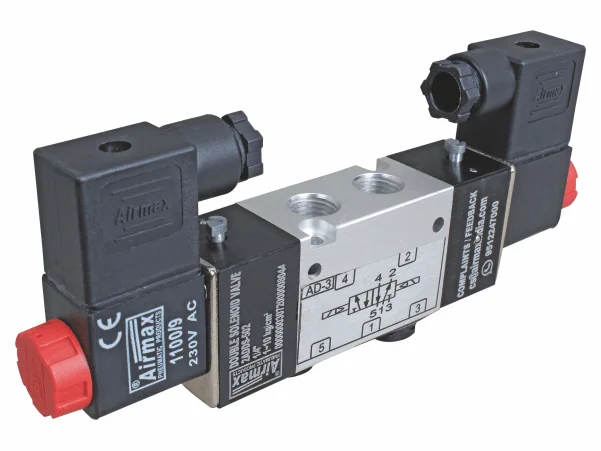In the world of engineering and automation, pneumatic systems play a crucial role in powering machinery and controlling processes. Central to these systems are pneumatic valves, which act as the gatekeepers of compressed air, regulating its flow to perform a variety of tasks. Pneumatic valves come in many forms, each tailored to specific applications. In this article, we will explore the various types of pneumatic valves and their diverse uses in different industries.
Solenoid Valves
Solenoid valves are perhaps the most commonly used type of pneumatic valve. They are easy to control and are often found in applications where rapid response is crucial. An electromagnet opens and closes a solenoid valve, allowing or blocking compressed air flow. These valves are ideal for tasks like controlling the flow of air in an air conditioner or managing the inflation and deflation of pneumatic cylinders in manufacturing.
Directional Control Valves
These valves are the workhorses of many pneumatic systems. They control the direction of airflow and are often used in applications requiring precise and sequential movement. Directional control valves come in various configurations, including 2/2, 3/2, and 5/2 valves, each suited for different purposes. For instance, a 3/2 directional control valve is often used in conveyor systems to divert products along different paths.
Pressure Relief Valves
Safety is paramount in any pneumatic system. Pressure relief valves are designed to protect equipment and personnel by releasing excess pressure when it surpasses a predetermined limit. These valves are vital in situations where over-pressurization could lead to catastrophic failure, such as in hydraulic systems or industrial air compressors.
Flow Control Valves
Maintaining precise control over the flow of air is essential in many pneumatic applications. Flow control valves allow operators to regulate the speed at which pneumatic actuators, like cylinders or motors, move. These valves are commonly used in manufacturing for tasks like controlling the opening and closing of a robotic gripper arm.
Proportional Valves
In situations where fine-tuned control is necessary, proportional valves come into play. These valves can vary the amount of air passing through them in proportion to the input signal, allowing for precise adjustments. Proportional valves find their place in applications such as the aviation industry for controlling hydraulic actuators on aircraft.
Pilot-Operated Valves
These valves are more complex and versatile than their direct-acting counterparts. They use a smaller pilot valve to control the larger main valve, making them suitable for high-pressure applications. Pilot-operated valves are used in a variety of applications, including controlling the flow of hydraulic fluid in heavy machinery.
Rotary Valves
Unlike the linear motion of most pneumatic valves, rotary valves operate by rotating a spool or disk to control airflow. These valves are often used in situations where a 90-degree or 180-degree rotation is necessary, such as opening and closing the doors of pneumatic cabinets or controlling the movement of a rotary actuator in industrial equipment.
Manifold Valves
When a system requires multiple valves to work in tandem, manifold valves come into play. They consolidate multiple valves into a single unit, simplifying installation and reducing the chances of leaks. Manifold valves are commonly found in complex pneumatic systems used in industries like automotive manufacturing.
In conclusion, pneumatic valves are the unsung heroes of automation and engineering, enabling a wide range of applications across various industries. The diverse types of pneumatic valves, from the simple but essential check valve to the precise proportional valve, cater to a multitude of needs, ensuring that compressed air is harnessed effectively and safely. As technology continues to advance, the applications of pneumatic valves will only become more sophisticated, revolutionizing the way we automate and control processes.



